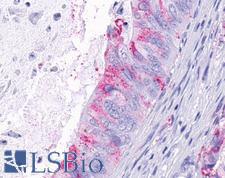Login
Registration enables users to use special features of this website, such as past
order histories, retained contact details for faster checkout, review submissions, and special promotions.
order histories, retained contact details for faster checkout, review submissions, and special promotions.
Forgot password?
Registration enables users to use special features of this website, such as past
order histories, retained contact details for faster checkout, review submissions, and special promotions.
order histories, retained contact details for faster checkout, review submissions, and special promotions.
Quick Order
Products
Antibodies
ELISA and Assay Kits
Research Areas
Infectious Disease
Resources
Purchasing
Reference Material
Contact Us
Location
Corporate Headquarters
Vector Laboratories, Inc.
6737 Mowry Ave
Newark, CA 94560
United States
Telephone Numbers
Customer Service: (800) 227-6666 / (650) 697-3600
Contact Us
Additional Contact Details
Login
Registration enables users to use special features of this website, such as past
order histories, retained contact details for faster checkout, review submissions, and special promotions.
order histories, retained contact details for faster checkout, review submissions, and special promotions.
Forgot password?
Registration enables users to use special features of this website, such as past
order histories, retained contact details for faster checkout, review submissions, and special promotions.
order histories, retained contact details for faster checkout, review submissions, and special promotions.
Quick Order
PathPlusTM ADGRA2 / GPR124 Antibodies
ADGRA2 (GPR124, Tumor endothelial marker 5) is a G protein-coupled receptor that is involved in regulating cell adhesion, angiogenesis, polarity acquisition during wound healing and maintenance of the blood-brain barrier in the central nervous system. This receptor contains a leucine rich repeat (LRR), an immunoglobulin (Ig) domain, and a hormone-binding domain (HBD). The Ig domain shows similarities to motilin and titin, while the LRR domain shows similarities to LRIG1 and SLIT1-2. GPR124 can enhance WNT signaling via WNT7, and inactivation has been shown to produce defects in angiogenesis in the forebrain and ventral spinal cord. It is upregulated in the vasculature of some tumors where it likely plays a role in tumor angiogenesis. In immunohistochemistry, this receptor has membranous positivity in the vasculature of the developing liver and brain during embryogenesis. In normal and diseased tissue in adults, it highlights vascular proliferative processes (such as in granulation tissue, pyogenic granulomas and Kaposi's sarcomas) and is present on proliferating endothelial cells. It also has some limited positivity in the central nervous system.
References: J Biol Chem. 2017 Jul 21;292(29):12178-12191, PMID: 28600358; Dev Cell. 2014 Oct 27;31(2):248-56, PMID: 25373781; Br J Pharmacol. 2017 Dec;174(24):4547-4563, PMID: 28244067
1 PathPlusTM Antibody

☰ Filters
Products
Antibodies
(1)
Type
Primary
(1)
Target
ADGRA2 / GPR124
(1)
Reactivity
Human
(1)
Application
IHC
(1)
IHC-P
(1)
Host
rabbit
(1)
Product Group
GPCR Database Antibodies
(1)
PathPlus Cancer
(1)
Clonality
polyclonal pc
(1)
Format
Unconjugated
(1)
Epitope
N-Terminus
(1)
Publications
No
(1)

Cancer
Fast Shipping
ADGRA2 / GPR124 Rabbit anti-Human Polyclonal (N-Terminus) Antibody
Human
IHC, IHC-P
Unconjugated
50 µg/$440
Viewing 1-1
of 1
product results










